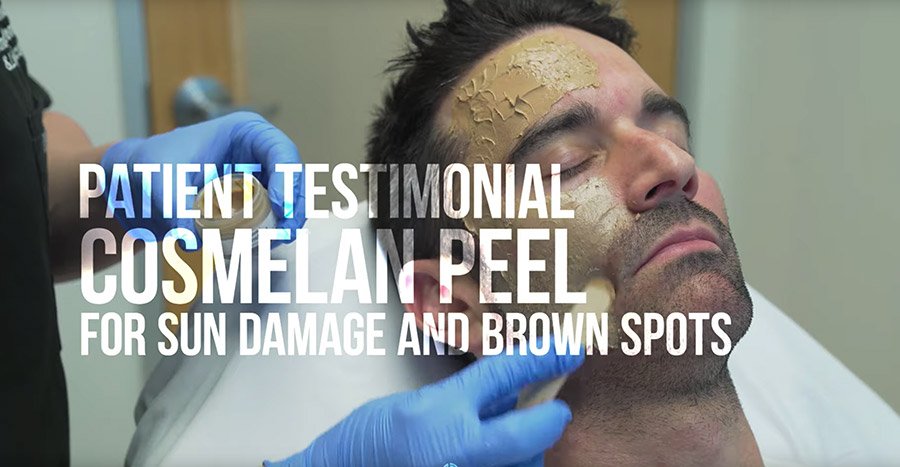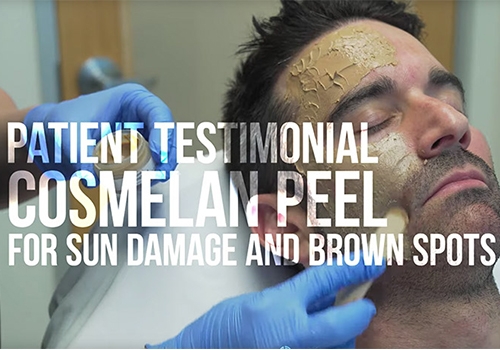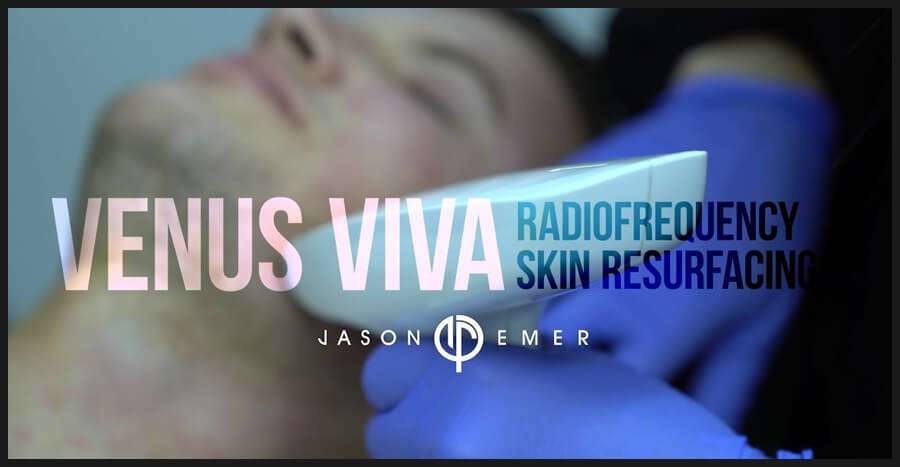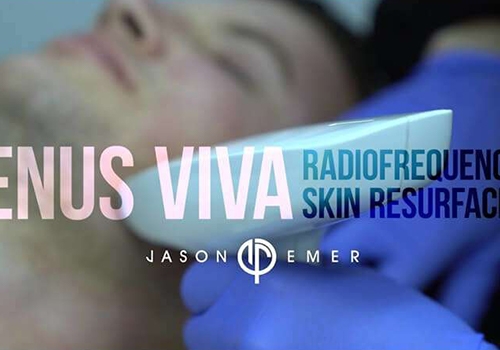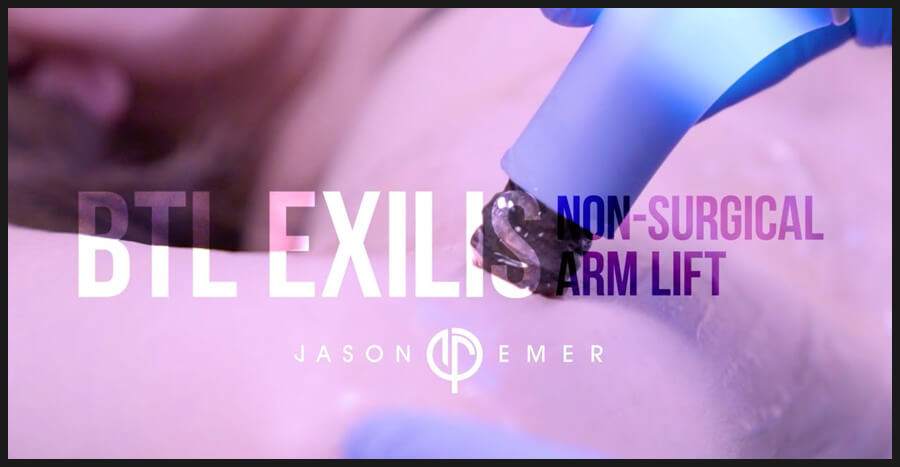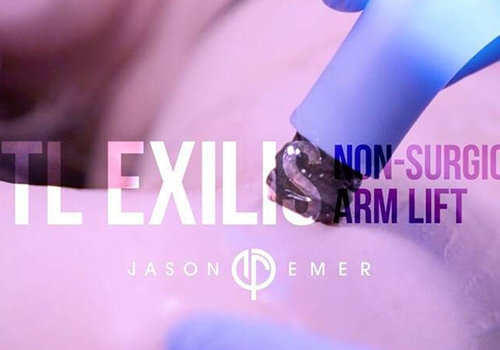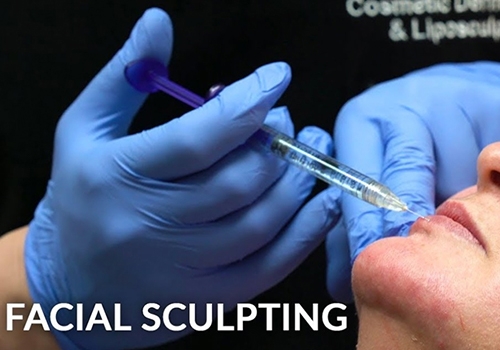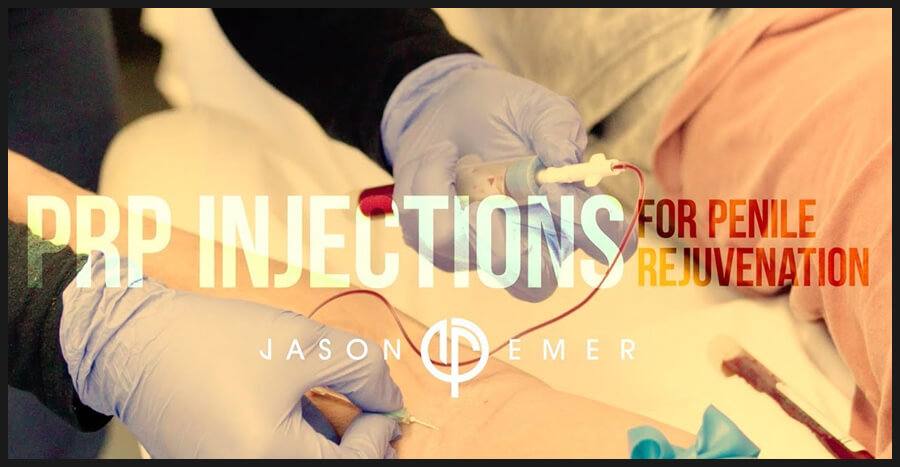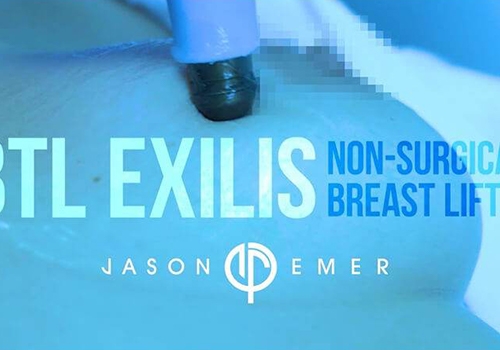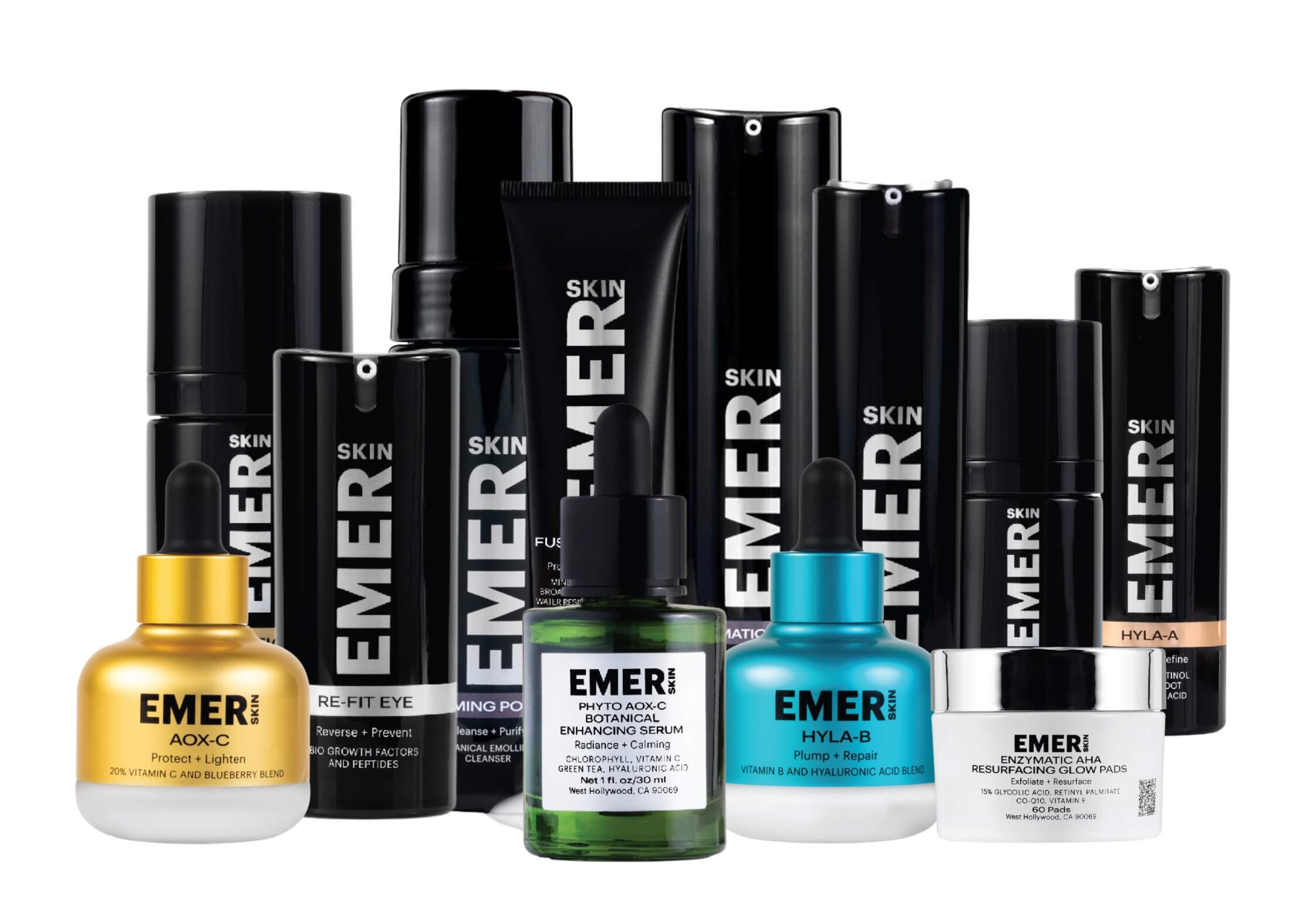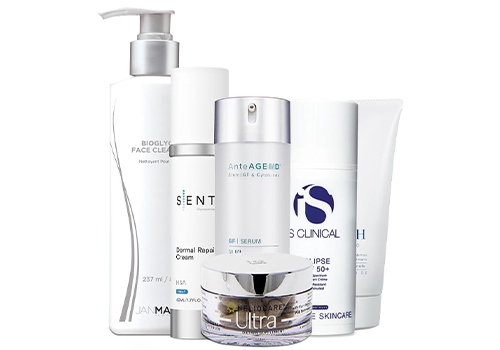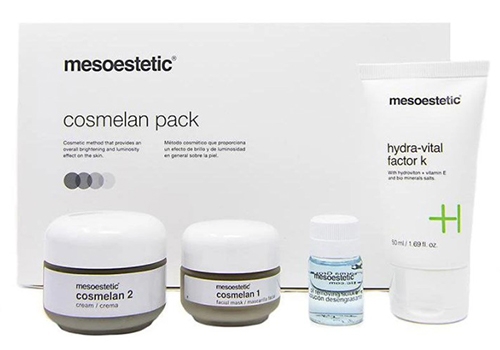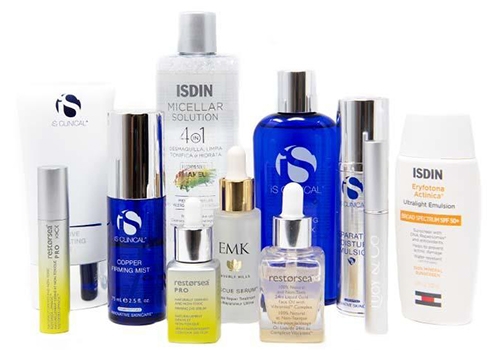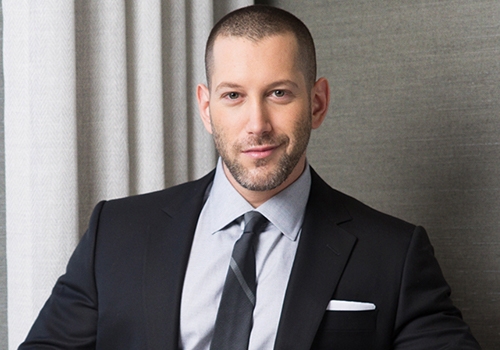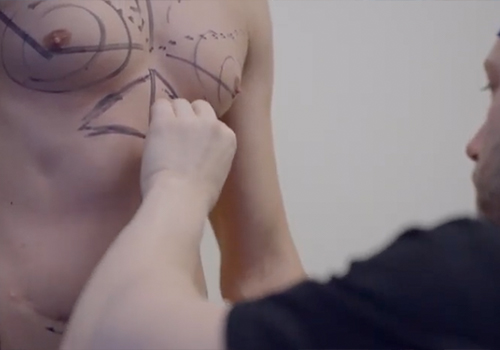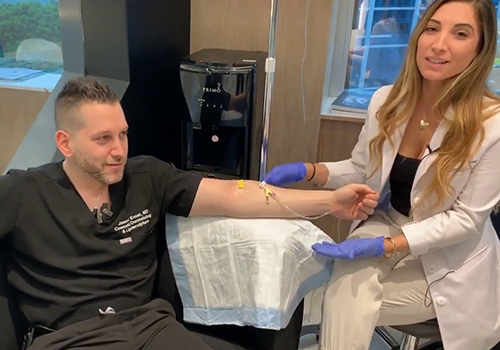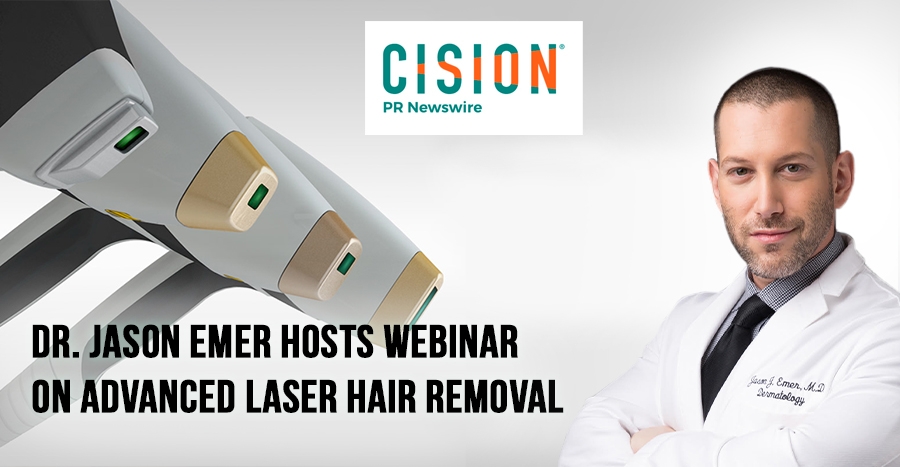Laser resurfacing is an essential component of preventative aging, and with a series of treatments and continued maintenance, it can produce dramatic improvements in skin texture, color, and tone. Laser resurfacing can even ward off skin cancer by removing harmful precancerous cells. For years, laser and skin resurfacing specialist and renowned cosmetic dermatologist Dr. Jason Emer has touted the wide range of benefits of the Fraxel laser, the gold standard for fractional laser skin resurfacing. This non-ablative, non-invasive laser stimulates the natural production of collagen, increases exfoliation, rejuvenates skin cells, and smooths the skin’s surface with minimal downtime.
Unlike ablative lasers, such as CO2 or Erbium, Fraxel’s improvements are the result of heating the skin tissue with minimal scabbing or charring of the top skin layers. And with the appropriate settings, the Fraxel laser can be used on all skin types. In his practice, Dr. Emer uses Fraxel to treat a range of skin conditions, including:
- Fine lines and wrinkles
- Hyperpigmentation
- Sun damage
- Acne scarring
- General or surgical scars
- Age spots and freckles
- Enlarged pores
- Stretch marks
- Loose or crepey skin
- Laser burns
Recognized as one of the only lasers FDA-approved to treat and prevent skin cancer, Fraxel can be used on the face, neck and chest areas as well as on the stomach, breasts, arms, hands, legs, and back.

How does Fraxel improve sun damage and prevent skin cancer?
During the treatment, Fraxel emits microscopic columns of laser energy (micro-thermal zones or “MTZs”) that penetrate deep into the skin, exfoliate sun-damaged, precancerous, and dead skin cells, and expedite the production of new collagen. Because Fraxel is a fractional laser — treating just a fraction of tissue at a time — it leaves the surrounding tissue intact, which promotes rapid healing. The Fraxel laser resurfaces the skin by stimulating the growth of new, healthy skin cells from the inside out.
How does Fraxel treat aging skin, fine lines, and wrinkles?
Numerous factors contribute to wrinkled and damaged skin, including the aging process, genetics, environmental factors, and sun exposure. Of course, these lifelong conditions are not corrected with a single procedure. Aging skin, fine lines, and wrinkles require regular maintenance and skin care treatments to obtain significant, lasting results.
Every 3 to 4 months, Dr. Emer advises that his patients undergo a facial resurfacing treatment — either with the non-ablative Fraxel laser or the ablative Erbium or CO2 laser — to combat wrinkles, reverse sun damage, address signs of skin cancer, improve skin texture, color and tone, stimulate natural collagen production, and aid in collagen building over an extended period of time. These treatments are often paired with Intense Pulsed Light (IPL) photofacials, microneedling radiofrequency (RF), or deeper peels (such as RevePeel Black Label) to enhance textural improvements and further stimulate collagen production.
How does Fraxel help improve acne scarring?
A renowned acne scarring and skin rejuvenation expert, Dr. Emer has an intention-driven, strategic approach to acne treatments: Each scar is treated individually based on its appearance and root cause. Dr. Emer draws upon numerous cutting-edge modalities and his own wealth of experience to create a personalized treatment plan.

To treat textural issues and superficial scarring, Dr. Emer uses fractional, non-ablative lasers like Fraxel to provide light resurfacing of the skin while ablative lasers, such as Erbium or CO2, vaporize the entire outer layer of the skin, achieving a deeper resurfacing and regenerating new cells. A series of treatments are always required for scarring, and continued treatments with Fraxel help to lift scars, fill them with collagen, and improve the texture of the skin.
How does Fraxel improve general scars?
Fraxel laser treatments can treat deep scars resulting from injury or surgery by stimulating collagen production to smooth the skin and restore the skin’s surface. Long-term improvement in scarring requires regular maintenance treatments, and results are further improved when Fraxel laser treatments are combined with vascular lasers, microneedling with PRP, and LightStim LED light therapy.

How does Fraxel treat burns?
Skin burn treatment is an intricate, long-term process that is customized to each patient’s condition and skin type and varies depending on severity, location of the burn, and whether or not hypopigmentation has occurred. Dr. Emer develops a tailored, long-term treatment plan for each patient, often involving a combination of lasers — including Fraxel, Clear + Brilliant, and Laser Genesis — to restore pigment to the area and repair the skin damage. Growth factors, platelet-rich plasma (PRP), topical medical grade creams, and sun protection are applied to promote additional healing.
How does Fraxel improve pores and freckles?
As with any cosmetic treatment, a combination approach to pores and freckles will produce the most dramatic improvements. Dr. Emer combines lasers such as Fraxel with Intense Pulsed Light (IPL) photofacials, microneedling with PRP, microneedling RF, customized peels, and a medical-grade lightening skin care protocol.


The number of treatments needed varies depending on each patient’s unique conditions. Lightening and exfoliating peels like Cosmelan and Enlighten are applied regularly following the Fraxel treatments to maintain the results.
How long do improvements last?
Fraxel skin resurfacing stimulates collagen production long-term. Depending on the aggressiveness of the treatment, patients typically have 2 to 7 days of downtime and see results in 3 to 6 weeks. Patients often do not see visible improvement in the first few treatments; a series of treatments is required to obtain optimal results.
- With milder treatments, many patients see improvement in fine lines and wrinkles, pores, and sun damage (pigmentation).
- With more aggressive treatments, many patients see improvement in deep wrinkles, precancerous skin cells, severe sun damage (pigmentation), and mild skin tightening, particularly around the mouth.
How does Dr. Emer do it differently?
Equipped with an impressive collection of cutting-edge lasers like Fraxel and alternative energy devices, Dr. Emer applies his skill, artistry, and vast expertise to create one-of-a-kind combination treatment plans that address his patients’ unique needs and conditions.
- To obtain more robust outcomes, Dr. Emer often combines Fraxel and CO2 skin resurfacing treatments with microneedling with PRP.
- To improve skin tightening, Dr. Emer combines Fraxel laser treatments with Ultherapy ultrasound skin tightening, radiofrequency treatments, non-surgical thread lifting, and Sculptra.
- For overall facial rejuvenation, Dr. Emer uses a multi-modality approach involving a series of treatments and numerous state-of-the-art devices, including:
- Regular non-ablative Fraxel and/or Clear + Brilliant laser treatments
- Occasional ablative laser treatments (such as Venus Viva, CO2, and/or Erbium)
- Sculptra injections for collagen production with fillers like Juvederm, Restylane, Belotero, Radiesse, and/or Bellafill
- Neuromodulators like Botox, Dysport, and Xeomin to stop movement lines and prevent lines at rest
- Thermage, Ultherapy, and thread lifting for annual skin tightening and lifting
- LightStim LED light therapy a few times each month
- Microneedling with topical products like AnteAGE MD GF Serum, growth factors, platelet-rich plasma (PRP), and stem cells (such as A-Cell)
- To treat general scars, Dr. Emer uses a customized combination of treatments depending on the type of scar:
- Fractional lasers (Fraxel, Erbium, CO2)
- Vascular lasers (Yellow laser, Vbeam, excel V)
- Microneedling with PRP
- Silicone-based scar gels (such as Silagen) with growth factors
- Scar revision / excision
Is Fraxel safe for all skin types?
High-density laser treatments and ablative lasers are not safe for use on patients with darker skin tones. Non-ablative lasers like Fraxel have a much lower risk of hyperpigmentation when used gently and at a lower density.
To further reduce the risk of post-inflammatory hyperpigmentation (PIH), Dr. Emer applies lightening peels — such as Cosmelan and Enlighten — both before and after any energy-based laser and/or radiofrequency procedures. Any hyperpigmentation that does occur is treated with hydroquinone, retinol, glycolic acid, and sun protection.
Am I a good candidate for Fraxel?
While Fraxel is a safe, non-ablative laser, it is still important to obtain a formal evaluation from a cosmetic dermatologist such as Dr. Jason Emer, who can determine if Fraxel is the ideal treatment for you and if you are a good candidate for the procedure. Although all skin types can be treated, the best candidates are those who have lighter skin tones and light eye color, who have no hormonal pigmentation or melasma, and who are committed to a long-term series of treatments.
Keep in mind that it is the expert behind the laser (and not the laser device itself) that produces safe, long-term, transformative results. Fraxel laser treatments should only be performed by experienced, board-certified professionals who specialize in skin resurfacing treatments.
Is the Fraxel laser treatment painful?
Yes, Fraxel is painful. The majority of patients experience minimal pain that is managed with topical numbing creams, but for those who are more sensitive to laser treatments, Dr. Emer offers oral medications, injectable nerve blocks, and oral nitrous/oxygen gases both before and during the procedure. After treatment, patients may feel some heat in the treatment area that can last anywhere from a few hours to a few days; to relieve discomfort, Dr. Emer suggests topical skin care creams, LightStim LED light therapy, and restorative healing masks, such as SkinCeuticals BioCellulose Mask or the Mesoestetic Post Peel Crystal Fiber Mask. Overall, with the aid of Dr. Emer’s pain management techniques, the treatment is very tolerable for most people.

What is the downtime?
There is minimal downtime with most Fraxel laser treatment; however, this depends on your aesthetic goals and the laser’s settings. Most patients experience redness and swelling for 24 hours after the treatment, followed by 3 to 5 days of light redness (comparable to a sunburn). Over the course of the next week, the treated area may flake and bronze as the skin heals.




For patients who experience prolonged inflammation following the treatment, Dr. Emer recommends at-home LightStim LED light therapy, which helps to increase circulation and accelerate the healing process (up to 150 to 200 times faster).
How do I schedule a consultation with Dr. Emer?
To schedule a consultation with Dr. Emer in Beverly Hills / Los Angeles / West Hollywood, California, please reach out to our concierge to schedule an appointment. Call 424-800-4140 or email us at appointments@jasonemermd.com.
